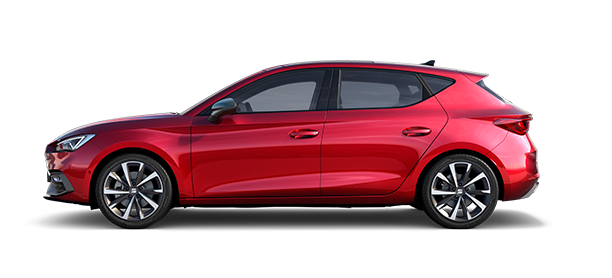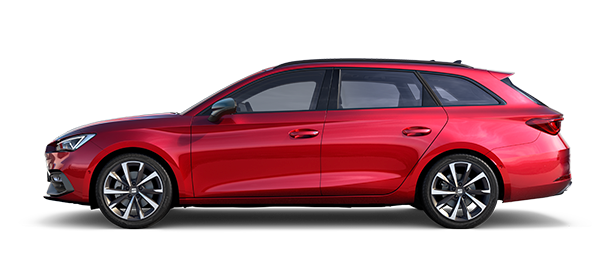Uus meetod kütusekulu mõõtmiseks
WLTP – uus standard
WLTP (Worldwide harmonised Light vehicles Test Procedure) on uus ülemaailmselt standardiseeritud sõiduautode kütusekulu ja heitmete mõõtmise katsemenetlus. See asendab senise, alates 1997. aastast kehtinud katsetuste standardi NEDC (New European Driving Cycle).
Katseid mõjutavad enim need kolm põhitegurit
Aerodünaamika
Mida suurem on auto õhutakistus, seda rohkem kulutab see kütust. Mida aerodünaamilisem on auto, seda väiksem on selle õhutakistus. Ka kõige pisematel aerodünaamikas tehtud muudatustel võib pikas perspektiivis olla väga suur mõju auto kütusekulule.
Rehvide veeretakistus
Sõidu ajal rehvid deformeeruvad ning sellest põhjustatud veeretakistus suurendab kütusekulu. Seepärast on väga tähtis konstrueerida rehvid võimalikult energiatõhusaks ning täita need õige rõhuni.
Mass
Raskete asjade liigutamiseks on vaja rohkem energiat. Seega – mida kergem on auto, seda vähem kütust see liikumiseks vajab. Ning kasutades vähem kütust, on auto säästlikum. Kergus võrdub niisiis säästlikkusega ja teeb auto lisaks ka paremini juhitavaks.
Mida peaksid teadma
Esikohale on seatud täpsus ja asjakohasus. Sama test on mõeldud läbiviimiseks erinevates teeoludes kõikjal üle kogu maailma. See on läbi aegade üks suurimaid muutusi kogu autotööstuses.
Realistlikumad sõidutsüklid
Rangemad auto katseparameetrid ja analüüs
Arvestatakse ka lisavarustuse mõju
Täpsemad temperatuurid
Mida uut toob uus standard
| NEDC | WLTP | |
|---|---|---|
| Kehtivusaeg ELis: | 1998-08/17 | 09.2017 – uute mootorite heakskiit (09.2018 – kõik sõidukid) |
| Lisavarustus: | Ei arvestata | Arvestatakse (aerodünaamika, rehvide veeretakistus, mass) |
| Etapid ja temperatuur käivitamisel: | „Linnas/linnast väljas“, külmkäivitus | „Aeglane/keskmine/kiire/eriti kiire“, külmkäivitus |
| Kestus ja teepikkus: | 1180 sek, 10 966 m | 1800 sek, 23 274 m |
| Kiirus: | Suurim kiirus 120 km/h, keskmine kiirus 33,6 km/h | Suurim kiirus 132 km/h, keskmine kiirus 46,5 km/h |
| Tööaeg tühikäigul: | 295 sek | 234 sek |
| Kiirendus: | Maksimaalne 1,04 m/s2, keskmine 0,50 m/s2 | Maksimaalne 1,58 m/s2, keskmine 0,39 m/s2 |
Real driving emissions at a glance.
In addition to WLTP, since September 2017 measurements in Europe have been made according to the RDE test procedure. RDE stands for "Real Driving Emissions". In contrast to NEDC and WLTP, emission measurements are not carried out on the test bench but in the running traffic. The determined pollutant emissions (NOx and particulate matter) while driving in the road are called real emissions.
In the RDE measurement, a route mix consisting of one-third of urban roads, rural roads and motorways, with random acceleration and deceleration, is driven. The average speed on the urban roads is between 15 and 40 km/h and a maximum of 60 km/h, on the rural roads between 60 and 90 km/h and on the motorway between 90 km/h and 145 km/h.
The vehicle is equipped with a PEMS (portable emission measurement system) measuring box. This device measures pollutant emissions (NOx, CO, CO2) and particles (PN). The journey takes between 90 and 120 minutes. The outside temperature must be between -7 and +35 °C, the air conditioning system can be switched on.
The new consumption values FAQs
What are NEDC, WLTP and RDE?
NEDC ("New European Driving Cycle") refers to a test realized on a test bench that has been used throughout Europe since 1992 to measure the exhaust emissions and fuel consumption of passenger cars and light commercial vehicles.
NEDC has been replaced by the globally standardized WLTP ("Worldwide Harmonized Light-Duty Vehicles Test Procedure"). The new method is intended to measure the consumption of a vehicle more realistically and is based on a modified test cycle with stricter test specifications.
In addition to WLTP, emissions in Europe are to be determined in accordance with the RDE ("Real Driving Emissions") test procedure by carrying out the measurements on the road.
What is the difference between WLTP and RDE?
While WLTP uses 30 minutes on a chassis dynamometer under standardized conditions, the RDE test takes place on public roads. In the RDE measurement, a route mix with random acceleration and deceleration is used, which takes between 90 and 120 minutes.
When do WLTP and RDE apply?
Since September 2017, the transition to WLTP and RDE has been gradual. From September 2018, the WLTP test procedure will be mandatory for all newly registered vehicles, as well as the limitation of the particle number (PN) in RDE. From September 2019, an additional RDE limit value for nitrogen oxides (NOx) will be mandatory for all new registrations.
What does WLTP mean for me?
The values determined by the WLTP test method are intended to reflect consumption and CO2 and exhaust emissions more realistically. This may mean that higher fuel consumption and CO2 emissions are to be reported for vehicles with internal combustion engines. The individual choice of engine and optional equipment will also affect fuel economy and CO2 levels. Depending on national legislation, this may also result in higher CO2 taxes.
How does SEAT implement the WLTP specifications?
From September 2018, all SEAT models will be successively converted to the WLTP test procedure.











